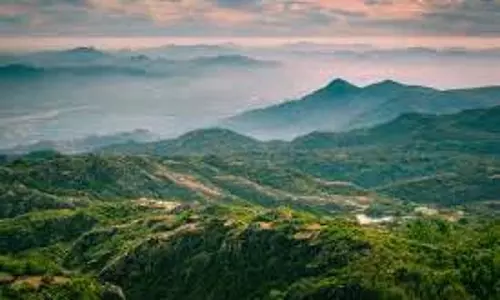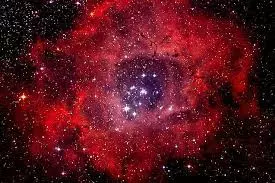
NASA finds a star cluster shaped like a human skull
text_fieldsThe Chandra X-ray Observatory of NASA has shared a composite image of a portion of the Rosette Nebula which is about 5,000 light-years from Earth. And the cluster of stars looks like a human skull.
Experts later clarified that the skull appearance is merely an optical illusion.
The US space agency wrote a note on Instagram titled 'a rose by any other name'. It began with a clarification that the star-studded image may first resemble a skull but it is little more than a trick of the eye. It further explained why the cluster looks like a skull.
"A cluster of stars resembles a colorful human skull in space. Red X-ray observations reveal hundreds of young stars near the center of the image. Large dense pockets of purple, orange, green, and blue gases interlaid with dust form the bone structure of this cosmic skull. Within the eye cavities of the skull bright blue stars stand out against the darkness of space. The slurry of dust and gas creating the bone structure is visibly denser in the bottom right of the image, creating a thick shroud blocking the sight of newly forming stars in the region. The uppermost corners of the image reveal a background of the blackness of space with sprinklings of stars throughout," explained NASA.
Revealing more about the nebula, the space agency said the data from Chandra reveals hundreds of young stars clustered in the centre of the image. It also has additional fainter clusters on either side.
"Observations from the Digitized Sky Survey and the Kitt Peak Observatory reveal the stars lurking inside this delicate cosmic rosebud. These super-hot stars, called O-stars, have blown layers of dust and gas away with their powerful radiation and winds, revealing a cavity of cooler dust. Some of Rosette's O-stars can be seen in the bubble-like cavity; however, the largest two stars in this picture are not in the nebula itself. Recent Chandra observations have revealed that the darker region of Rosette is a nursery for newly formed stars. Within the dense molecular cloud which makes up the jaw of this skull-like arrangement, hundreds of newly born stars are swaddled beneath a gaseous veil," read the Instagram caption.
The Rosette Nebula is named for its rose-shaped arrangement.























